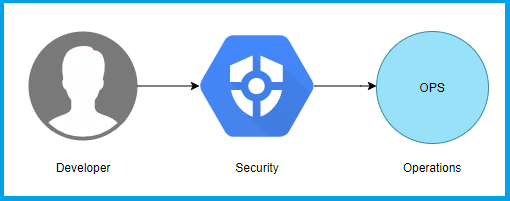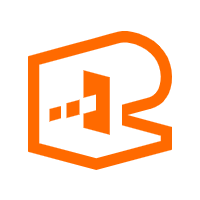By Raghav K.
Collaboration between teams is essential for productivity. Productivity is dependent on several factors, such as tools, delivery cycle, the distribution of teams, security, and policy. Setting up an effective collaboration strategy is one of the most critical factors in a DevOps setup. Working from home has almost become a standard operating policy.
Effective collaboration between peers and innovation is important. Establishing new and efficient ways to communicate and collaborate must be the first priority. In this article, I will outline some of the collaboration challenges during the COVID-19 pandemic and its aftermath and discusses which tools can help seamless collaboration.
DevOps Teams usually grow and develop a certain way to facilitate collaboration. It is more about gelling into the ever-growing work culture and using different tools to overcome any hurdles you might face. DevOps is a culture that establishes a pipeline-wide need for contribution from all peers.
The very first challenge is presented when an internal team has to collaborate with an external team. Here, there is a possibility that both these teams might be using different tools. This could create a communication barrier and hinder cross-team collaboration.
Automation is the key. DevOps is highly dependent on automation to maintain the volume and velocity of release. Managing workflows and manual handling of tasks could lead to a big challenge. You might not be able to meet Continuous Integration and Continuous Delivery (CI-CD) requirements. You have to make sure your workflows are executed, and all other channels, including communication, incident response, and automation, are functional.
Managing gaps between automated and manual systems is another challenge. Tools like Jenkins and Jira can help here, and I will discuss that later in this article.
Maintaining data security is paramount. Teams have to deep-seed security at every level. This is where the concept of DevSecOps comes into practice. Choosing the best possible tool according to the usage scenario is also important. The need here is to maintain a strong security practice across the line to diminish any security or compliance issues between your DevOps lifecycle. It all boils down to choosing the best practice that enables developers to maintain control and ownership over data.

Social networking and team meeting tools flooded the market last year. Working from home requires strong communication at the organizational level, and the developers, testers, and automation engineers have several requirements that cannot be fulfilled using these messaging tools.
Comprehensive code sharing and code-level collaboration-based communication tools are required to overcome this challenge. DevOps teams need to maintain speed and efficiency associated with the pipeline to help get the job done. A strong connection between tools and DevOps systems needs to be established to facilitate any requirements.
An organization can have multiple team structures with people working in different domains combined under the DevOps pipeline. These teams have a basic requirement to maintain a no-fail communication policy for effective coordination and collaboration. There are tools that can be used to establish strong communication for effective collaboration within the DevOps Teams. Let's talk about some of these tools:
Trello enables a shared-list architecture to work within the DevOps teams. It implements an effective collaboration mechanism by enabling a single view for an entire project. It also lists the progress of a project by outlining all of the activities that are currently being worked on, the ones that are scheduled, and the ones that are finished.
Each task can contain files or images and can be linked directly to other data sources to enable collaboration through discussion and comments. Trello features power-ups to enable integration and delivery on the dashboard, record and reflect metrics, and use a repository for code-sharing.
Alibaba's Teambition offers the same project management capabilities as Trello, but also includes additional features as well as collaborative tools to help you improve productivity. If you are planning on collaborating with teams in the China region, I would suggest giving Teambition a shot.
When we talk about a messaging app, sending and receiving messages is the only thing that comes to mind. When we talk about collaboration, we are talking about cross-team communication, group chats, video conferencing, file sharing, and security. Developing an application like this presents a real-world challenge to maintain reliability and consistency within a DevOps pipeline.
Alibaba Cloud developed DingTalk for project collaboration needs. DingTalk helps cross-team collaboration without compromising on data security. You have data ownership and full control to decide who can access the shared resources. Alibaba Cloud DingTalk is among the most used collaboration platform in China.
Basecamp is also a shared-list based collaboration tool that implements to-do lists, file sharing, and threaded messaging for interactive collaboration needs. Basecamp is particularly useful when you are organizing plans and establishing seamless communication. It offers one-stop access to relevant communication and data. Its most impressive feature is the open API that can be used for integration with third party service.
JIRA is a project tracking and management tool that enables a simpler way of collaboration between different DevOps Teams. JIRA can be used to develop custom workflows and for recording metrics. There is no size dependency for teams, and it is very simple to enable bug and defect tracking. JIRA also allows build management and can be integrated with several source code repository and control programs like Git.
Slack can work across small, medium, and large enterprises. It offers many free features for the users to leverage, but there are paid premium features as well. Slack makes the list of popular collaboration tools that offer direct messaging, audio and video meetings, and document sharing. Slack also features integration with many third-party services, including GitHub.
Multiple DevOps tools can help an organization establish collaboration and maintain the team exercises of development, testing, and deployment. In the end, it all depends on how much you are willing to spend and how well integrated you want your teams to be. There are several tools to enable team members to collaborate and communicate seamlessly, but I prefer DingTalk above all. In my opinion, Alibaba Cloud DingTalk is the hands-down winner when it comes to seamless collaboration. DevOps and other IT operations distances are eliminated with DingTalk.

2,599 posts | 769 followers
FollowAlibaba Clouder - October 27, 2020
Alibaba Clouder - December 28, 2020
Alibaba Clouder - September 1, 2020
Alibaba Clouder - September 7, 2020
Alibaba Clouder - September 9, 2020
Alibaba Clouder - December 8, 2020

2,599 posts | 769 followers
Follow API Gateway
API Gateway
API Gateway provides you with high-performance and high-availability API hosting services to deploy and release your APIs on Alibaba Cloud products.
Learn More DevOps Solution
DevOps Solution
Accelerate software development and delivery by integrating DevOps with the cloud
Learn More Alibaba Cloud Flow
Alibaba Cloud Flow
An enterprise-level continuous delivery tool.
Learn More Business Mid-End Solution
Business Mid-End Solution
This solution provides you with an enterprise-level omnichannel digital platform that gets your procurement and sales onto the same platform to enhance business competitiveness.
Learn MoreMore Posts by Alibaba Clouder